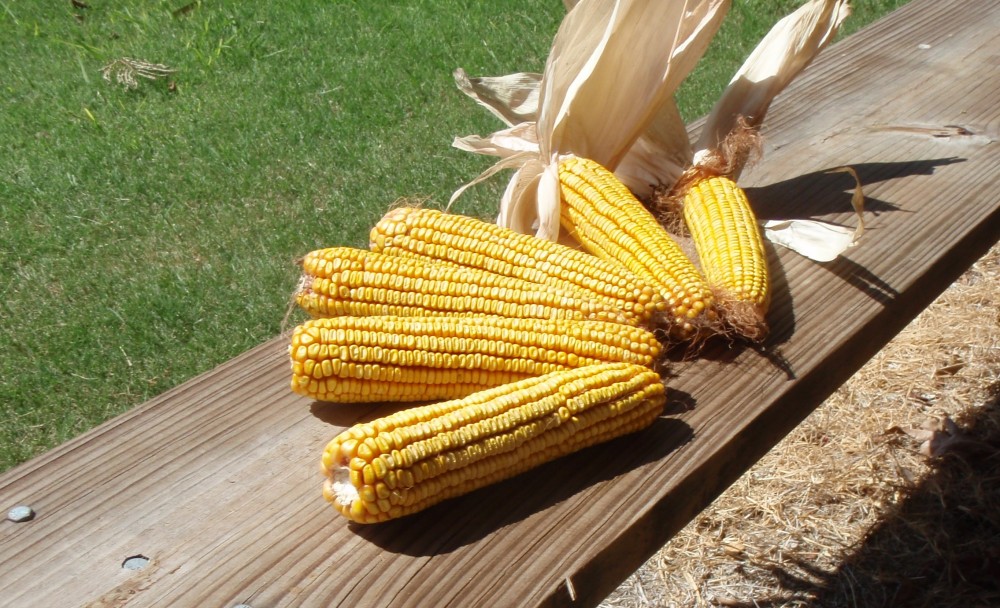In 1931, Russian botanist Nikolai Ivanovich Vavilov proposed that maize or corn originated from a short, bushy plant called teosinte domesticated by prehistoric farmers 7,500 to 12,000 years ago in the area of southern Mexico, Guatemala, Honduras and Costa Rica. This geographic region is referred to as the South Mexican and Central American Vavilovian Center. See the Article on “Who is Nikolai Ivanovich Vavilov?” By 4,500 years ago, corn was being raised and used by the natives throughout North and South America.
In the 15th and 16th centuries, explorers and traders to the New World sailed home with precious cargoes of corn, spreading it by wagon, caravan and vessel across Europe and to the rest of the world. Today, corn is the most widely cultivated crop in the world. The United States produces 40% of the world’s harvest, followed by China, Brazil, Mexico, Indonesia, India, France, Argentina, South Africa and the Ukraine. My home state of Iowa produces the most corn in the U.S. I grew up with the childhood sing-song “knee-high by the Fourth of July” to mean a good crop was on the way. I remember a recent trip on a sunny fall day with the dust of the harvesters signaling across the rolling hills and the corn glittering like gold in the distant grain wagons. It is an image I will never forget.
Where I grew up, most corn was referred to as “field corn,” to distinguish it from “sweet corn.” Field corn is allowed to stand in the fields until the stalks are brown and the kernels on the ears are dry and mature, the dent stage, because the dried kernels are dented inward from the shriveling of water loss. Field corn has many uses. The corn itself and bales and fodders made from the stalks, cobs and leaves are fed directly to animals. Corn kernels are processed by smashing, bashing, squeezing, heating and mixing into many varieties of foods for human consumption, oils for cooking, medicines for treating and organic chemicals for manufacturing plastics, fabrics, adhesives and other items you use and view every day. Approximately 40% of the world corn crop is converted to corn ethanol, a biofuel, to run our cars and power our engines.
My hat is off to all these practical and beneficial uses of field corn, but in my view and I suspect the view of many, the pièce de résistance of the corn world is sweet corn. Sweet corn is a spontaneous mutation of field corn. It is shorter than its field-hardy cousin, but it is oh so sweet and oh so good. Plucked from a pot of boiling water and skewered on each end with those little metal prongs shaped like tiny plastic ears of corn, the kernel-rich ear is slathered with butter, sprinkled vigorously with salt and pepper and munched down the rows of sweet delight like a human typewriter hitting the return and bouncing back for more. Sweet corn is my favorite mutant vegetable. It is said the Iroquois Indians of North America offered the first sweet corn, called Papoon, to European settlers in 1779. The world has not been the same since.
While field corn is viewed as a grain, sweet corn is prepared and eaten as a vegetable. Sweet corn is picked when immature in its milk stage. It stores poorly and must be eaten fresh, canned or frozen, before the kernels become tough and starchy. So, eat it fresh from the garden if you can.
An interesting fact about that ear of corn you are holding. The individual ear always has an even number of rows of kernels. So, if you can restrain yourself for a moment, count the rows and see if this is true.
I just called Uncle Joe and he said the sweet corn is about a week away from being ready. The anticipation is mounting. If possible, I plan to be there on the first day, as a scientific experiment, of course, to count the rows — if I can wait that long.
I wish you well on your sweet corn search,
Grandpa Jim
